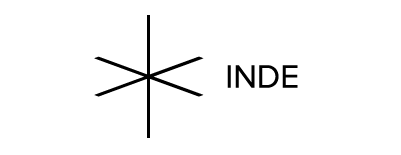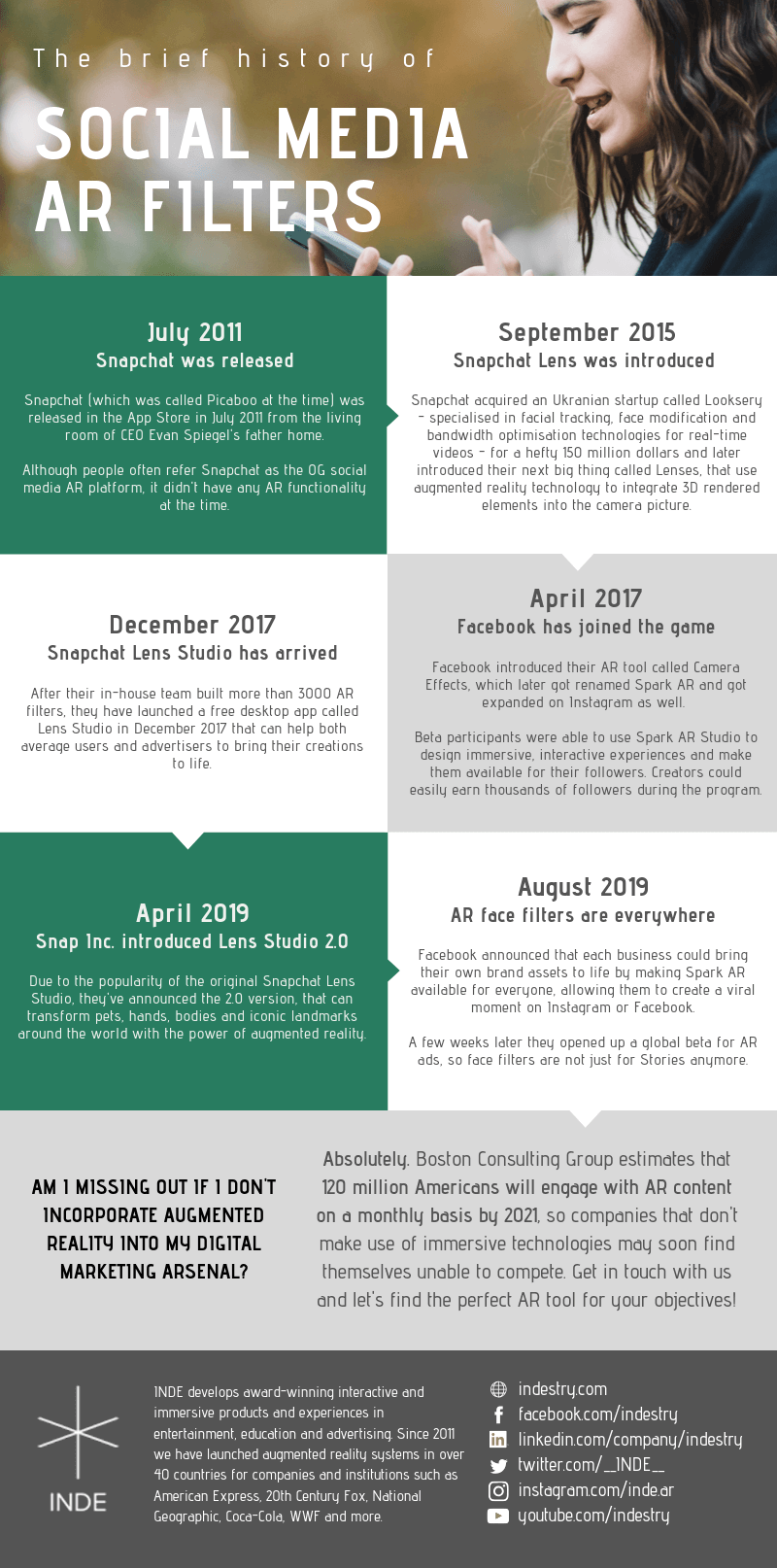The Brief History of Social Media AR Filters
"Camera marketing" is clearly one of the next waves of digital marketing, as smartphones and their integrated cameras have brought a new era in consumer behaviour: users engaging more and more with the physical world through a digital lens. Boston Consulting Group estimates that 120 million Americans will engage with AR content on a monthly basis by 2021, so companies that don't make use of immersive technologies may soon find themselves unable to compete.
It seems like the success of social media AR happened overnight, but the technology has been around for quite a while now. Let’s give you a brief overview of the evolution of AR face filters!
Pioneering the use of AR in social media
Snapchat (which was called Picaboo at the time) was released in the App Store in July 2011 from the living room of CEO Evan Spiegel's father home. It was meant to create multimedia messages called "Snaps" that can consist of photos or videos and can be edited to include filters, effects, captions and small doodles. They could be sent privately or to a so-called "Story" that disappears after a single viewing, but this temporary nature made the app appealing to younger audiences.
People often refer to Snapchat as the OG social media AR platform, but the technology actually came from a Ukrainian startup called Looksery, which specialised in facial tracking, face modification and bandwidth optimisation technologies for real-time videos. Snapchat acquired Looksery in 2015 for a hefty US$150 million and later introduced their next big thing called Lenses, that use augmented reality technology to integrate 3D rendered elements into the camera picture.
Snapchat Lenses was an instant hit among users. After their in-house team built more than 3000 AR filters, they have launched a free desktop app called Lens Studio in December 2017 that can help both average users and advertisers to bring their creations to life. Two years later, they have announced the 2.0 version, that can transform pets, hands, bodies and iconic landmarks around the world with the power of augmented reality.
Although Snapchat entered rough waters in 2018 when a lot of users ditched the application after a re-design, it is now more popular than ever before: Daily Active Users (DAU) has increased 8% year-to-year to 203 million daily active users for Q2 2019.
Meanwhile in Palo Alto
Facebook had a lot of catching up to do to Snapchat when it comes to “self-destructing” messaging and AR filters. After Snapchat reportedly turned down Mark Zuckerberg's offer (at least twice), Facebook decided to create a similar app called Slingshot, but it was discontinued and removed from the app store and Google Play store in less than two years.
In 2016 they launched a new feature on Instagram called Stories, which feels much like Snapchat Stories. Content shared to Stories is available for only 24 hours from the time of posting. A year later they rolled out Facebook Stories that let Facebook users share multiple photos and videos as part of a visual collection at the top of their News Feed - needless to say; it was another attempt merging ever closer with Snapchat.
Just a couple of hours after Snapchat debuted their World Lenses in April 2017 Facebook introduced their AR tool called Camera Effects, which later got renamed Spark AR and got expanded on Instagram as well. Beta participants were able to use Spark AR Studio to design immersive, interactive experiences and make them available for their followers. Creators could easily earn thousands of followers during the program, as users had to follow them to unlock their filters.
In August 2019, Facebook announced that each business could bring their own brand assets to life by making Spark AR available for everyone, allowing them to create a viral moment on Instagram or Facebook. Following some easy steps, each brand can now launch an effective campaign and measure its ROI.
Face filters are not just for Stories anymore. A select group of advertisers could tests AR ads since their 2018 reveal, and they will open up a global beta this fall, making the ad format available to all advertisers.
The Brief History of Social Media Augmented Reality Filters infographics
The future
Augmented reality is no longer a future technology; however, marketers don't realise how much potential does it really have. Snapchat lenses and Facebook / Instagram filters can now range from real-time product try on and virtual showrooming to fully immersive experiences.
You don't need to be a powerhouse brand anymore to launch a successful marketing campaign and gain value from lens and filters - that's where our diverse team of designers and developers come into play. If you're considering to gain value from AR, don't hesitate to get in touch with us!

